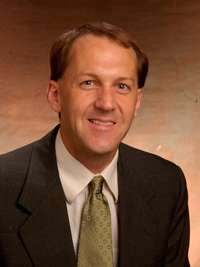Research Highlight: Jeremy Holleman

Jeremy Holleman’s research focuses on reducing the size and power consumption of electronic devices to allow groundbreaking sensing and processing applications. For example, he is currently collaborating with biomedical engineers to develop special low-noise amplifiers for receiving signals from peripheral nerves with the potential to allow neural control of prosthetic limbs. The amplifiers must process the extremely small signals (a few millionths of a volt) while keeping power dissipation low to avoid heating the tissue. While requirements are challenging, the potential payoff for amputees and other patients is more than worth the effort.
In another research venture under an NSF grant, Dr. Holleman and EECS colleague Itamar Arel have teamed to study electronics circuits that mimic cortical circuits in the human brain. The overarching aim of the project is to build low-power chips that perform intelligent pattern recognition tasks, like medical diagnoses, speech recognition, and machine vision.
Holleman is also teaming with some unlikely partners to investigate low-power integrated circuits for biomedical devices and other wireless sensing applications—bats. Holleman and UT ecology and biology professor Gary McCracken are equipping bats with tiny monitoring devices to study how the bats use acoustic signals for foraging and communication. Under a $400,000 NSF grant, Holleman’s team is developing a breakthrough miniaturized ultrasonic recording device small enough to be mounted on bats for recording calls and echoes during flight, effectively reducing the distance between bat and transducer from a few tens of meters to a few centimeters and improving existing signal quality by several orders of magnitude.
Holleman is an assistant professor of Electrical Engineering and Computer Science. He received a Bachelor’s degree in Electrical Engineering from Georgia Tech in 1997 and his Master’s and PhD degrees in Electrical Engineering in 2006 and 2009, both from the University of Washington.